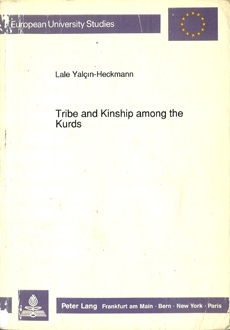Contents
List of Tables / 8
Illustrations, Maps and Figures / 9
Acknowledgements / 11
Notes on transliteration / 13
Introduction / 17
Chapter 1. Guns and loyalties / 27
The case of the Sisin’s guns / 27
Analysis: norms and contradictions / 36
Kinship, tribe and state / 39
Chapter 2. The history of politics in Hakkari / 41
Introductory remarks / 41
Some notes on the problems of sources / 42
Early history of Hakkari / 44
Some theories on the origins of Kurds in Hakkari / 45
Hakkari from the 12th to the 16th centuries / 46
Hakkari in the 16th century and the case of Zeynel Beg / 49
Hakkari as recounted by Evliya Çelebi in the 17th century / 56
Hakkari’s Nestorians from the mid-17th until the 19th centuries / 56
Hakkari in the 19th century / 57
The case of Nurullah Beg / 59
Hakkari’s Nestorians in the second half of the 19th century / 61
The politics of the Sadate Nehn family / 63
Hakkari after the First World War / 67
Hakkari and the formation of the Turkish Republic / 69
Chapter 3. The physical, social and economic landscape of Hakkari / 75
The physical landscape and the climate / 75
Population characteristics and settlement patterns / 78
Population movement and mobility in Hakkari / 80
Age group distribution and infant mortality in Hakkari / 82
Development indicators in Hakkari / 84
Summary / 95
Chapter 4. Tribes and tribal ideology in Hakkari / 97
Introduction / 97
Terminology and classification of tribal organization / 98
Criteria for the local denotations for tribes / 102
Tribal ideology and relations / 106
Residence, neighbourhood and zoma / 113
Disputes and segmentation / 115
Leadership in Hakkari / 120
Summary and concluding remarks / 132
Chapter 5. The village and the village household / 135
The village setting / 135
The house: the use and symbolism of its social space / 137
Seasonal changes and the household / 145
Household members and composition / 149
Gender roles and relations of rank and order / 159
Chapter 6. Relations of exchange between the households and village economy / 169
Exchange and reciprocity / 170
Domestic economy and economic differentiation between households / 175
Summary and concluding remarks / 182
Chapter 7. Kinship and affinity / 185
Kin and affinal categories and kinship terminology / 185
Kin and affinal interaction / 199
Concluding remarks / 209
Chapter 8. Marriage / 211
Local concepts relating to marriage and marital status / 211
Terms of reference and address related to marriage / 213
Age of marriage / 214
Civil and religious marriage ceremonies (nikah) / 215
Polygamy versus monogamy; wife-inheritance / 218
Father’s brother’s daughter, direct exchange and bride-price marriages in
Hakkari: theory and practice / 226
Wife kidnapping and elopement / 247
Summary / 253
Notes to Chapters / 257
Appendices
Appendix I. Rulers and the chronology of Hakkari / 295
Appendix II. Partial genealogy of the Sadate Nehrf / 296
Appendix III.Seasonal cycle of production and labour usage in / 297
Hakkari’s mountain villages
Appendix IV. Household histories from Sisin (1943-1983) / 299
Appendix V. Household labour and herd distribution among
Sisin households (January 1982) / 301
Appendix VI. Kurdish kinship terms from Hakkari / 303
Appendix VII.Village wedding ceremony / 304
Appendix VIII. An example of marriage payments in Hakkari / 307
Illustrations / 309
List of kinship abbreviations / 316
Glossary / 317
References
List of Tables
Table 3.1. Women and infant mortality in Hakkari / 83
Table 3.2. Literacy in Hakkari and Turkey / 87
Table 3.3. Work and economic activities in Hakkari / 90
Table 4.1. Tribal blocs in Hakkari / 101
Table 4.2. Mai membership among Sisin households / 108
Table 4.3. Sisin households’ lineage membership as distributed to two quarters / 109
Table 4.4. Lineage membership and zoma composition in Sisin / 109
Table 5.1a. Household composition in Sisin (early 1982) / 155
Table 5.1b. Totals, mean and percentages for Sisin households / 156
Table 6.1. Animal prices in Hakkari / 180
Table 6.2. Estimated (partial) costs and returns of a household in Sisin (1981) / 181
Table 8.1. Marriage types in Sisin / 228
Table 8.2. Kinship relations of women marrying within, into or outside Sisin / 232
Table 8.3. Direct wife exchange marriages in Sisin / 238
Illustrations, Maps and Figures
Illustrations
1. Yiiksekova / 309
2. A mountain village with terraced fields / 310
3. Winter in a mountain village / 311
4. A group of patrilineal cousins at the pasture camp / 312
5. Boys carrying bush from the mountain to the valley / 312
6. Women’s quarter of the tent / 313
7. Men dancing at a pasture wedding / 314
8. Woman grinding maize with a hand-mill / 315
Maps
Map 1.Turkey (general) / 15
Map 2.Hakkari and its surroundings / 25
Map 3.Topography of Hakkari / 23
Figures
Figure 1.1. Persons mentioned in the story of Sisin’s guns / 31
Figure 4.1. Lineage A households in Sisin / 111
Figure 4.2. Sisin households linked through women / 111
Figure 5.1. Sketch plan and frontal view of a main building / 138
Figure 7.1. Genealogical kin terms / 189
Figure 7.2. Affines of patrilateral and matrilateral kin / 189
Figure 7.3. Male EGO’s affines / 189
Figure 7.4. Female EGO’s affines / 189
Figure 7.5. Extension of kin terms / 190
Figure 7.6. Extension of affinal terms / 190
Figure 7.7. Kinship terms used in consecutive or polygynous marriages / 192
Figure 7.8. Women and children in polygynous marriages / 192
| 